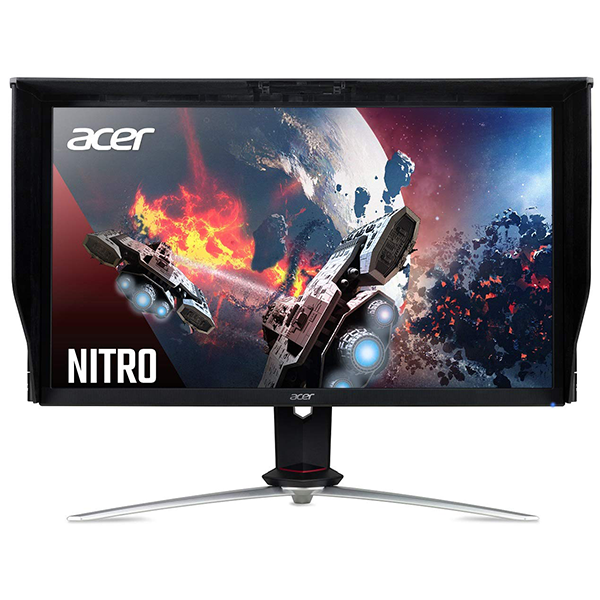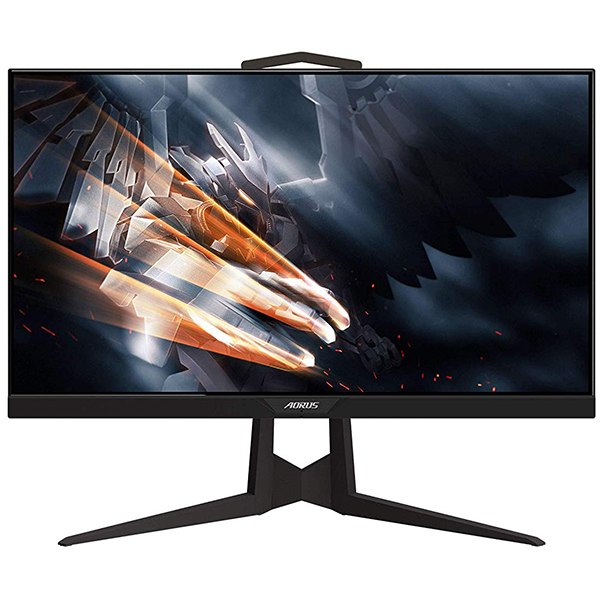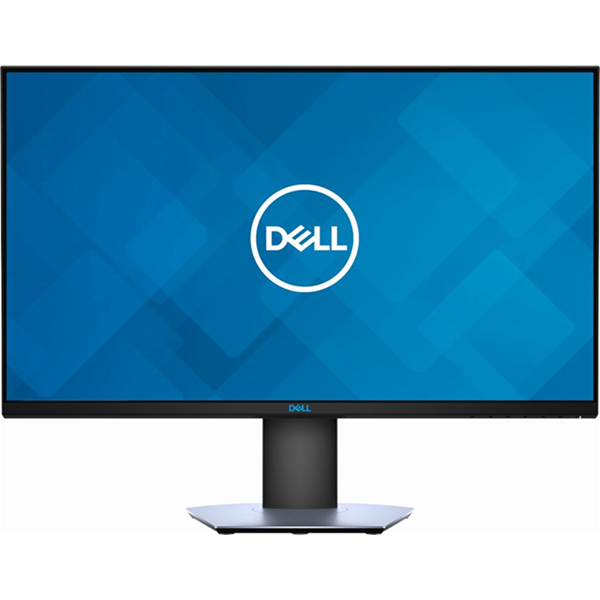Acer XFA240 144Hz Gaming Monitor Review: A Bargain Speed Machine
Why you can trust Tom's Hardware
Brightness and Contrast
To read about our monitor tests in-depth, check out Display Testing Explained: How We Test Monitors. Brightness and Contrast testing is covered on page two.
Uncalibrated – Maximum Backlight Level
For comparison we brought in a collection of 24, 25 and 27-inch gaming monitors that are mostly in the budget category. The exception is Acer’s Nitro XV273K, a 400-nit 4K IPS panel with HDR and G-Sync that sells for around $775. The others can be had for under $500: ViewSonic’s Elite XG240R, MSI’s Optix MAG271CQR, Dell’s S2719DGF and the Aorus KD25F.
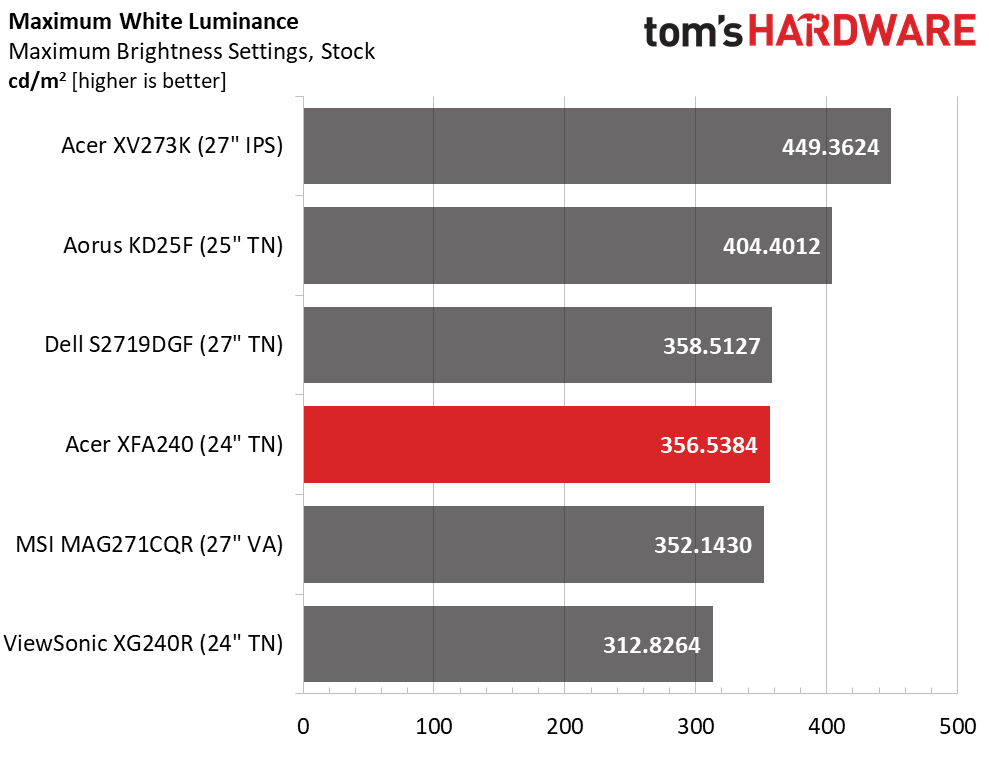
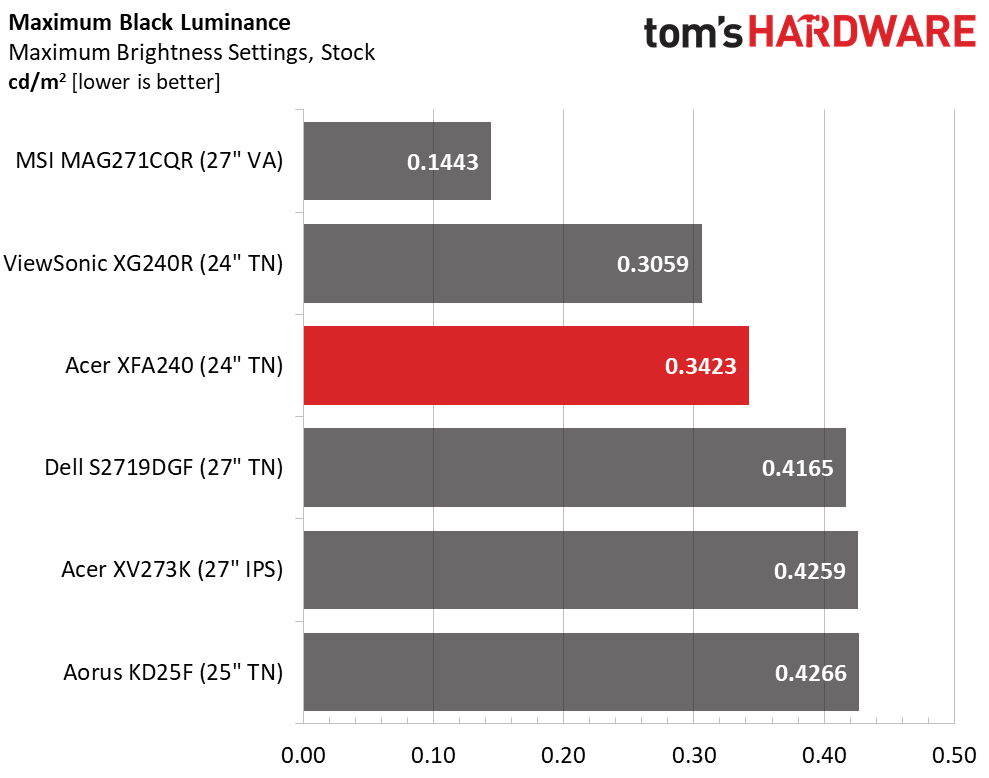
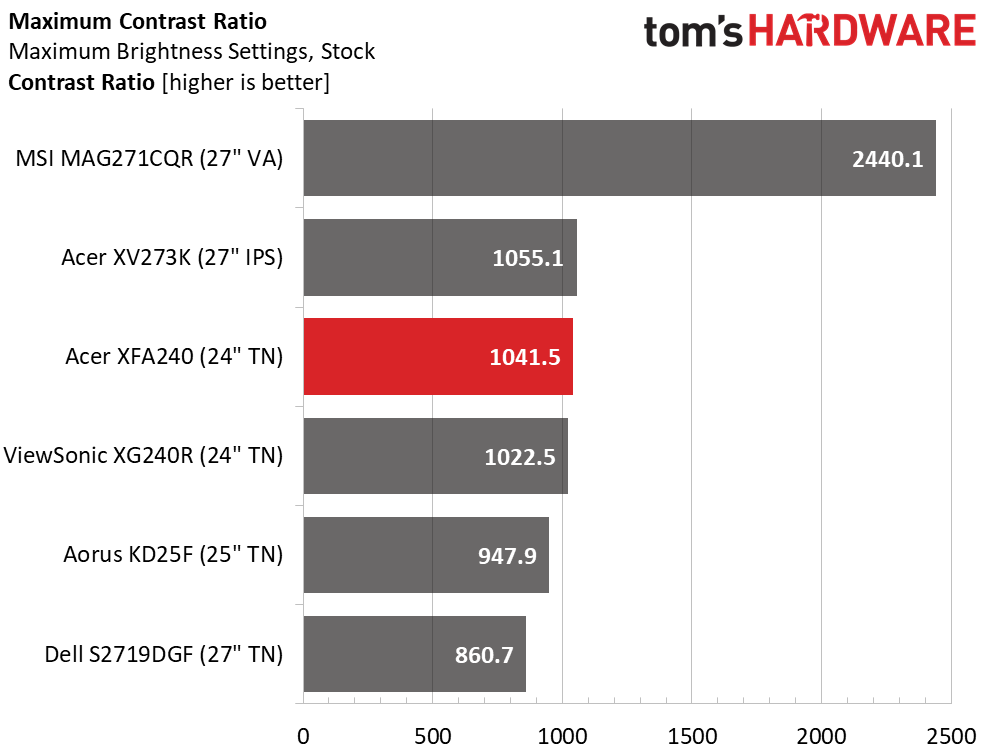
The XFA240 delivers all its claimed 350 nits, plus a little more. There is plenty of brightness available for all but the most intensely lit environments. TN technology isn’t known for its deep black levels, but the XFA240 comes in just behind the TN-equipped ViewSonic. Unsurprisingly, all the screens are well behind the MSI’s VA panel in contrast, but the XFA240 acquits itself well with a static contrast ratio of 1,041.5:1. This is without any dynamic contrast feature in use, but we avoid that feature in general because it reduces highlight and shadow detail, ultimately leaving the image lifeless and flat.
After Calibration to 200 nits
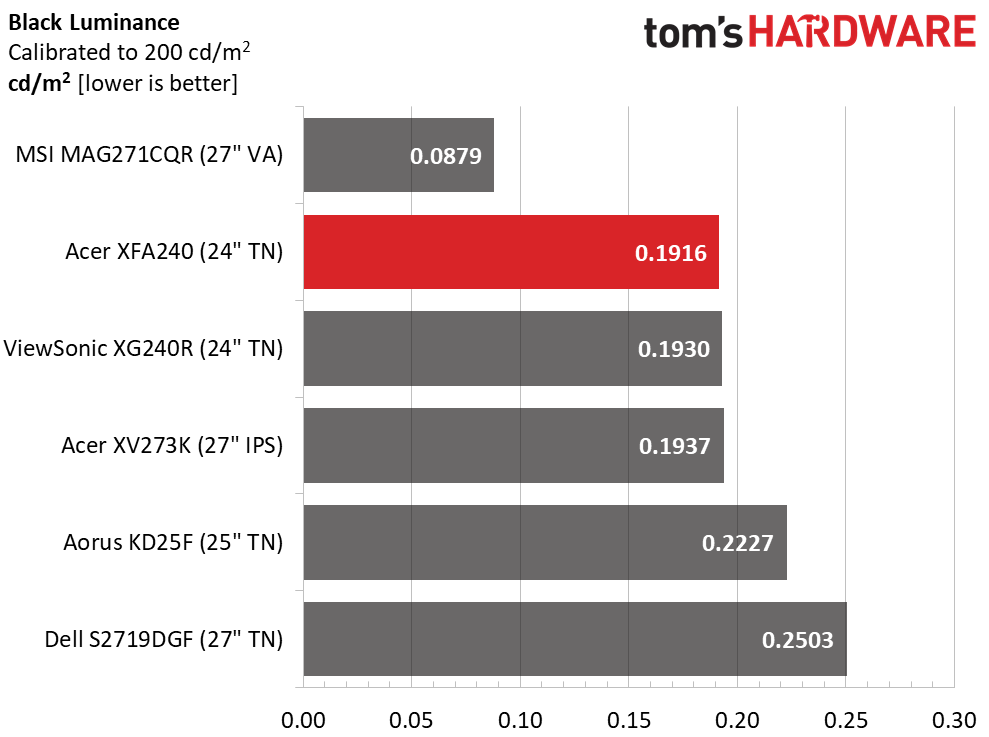
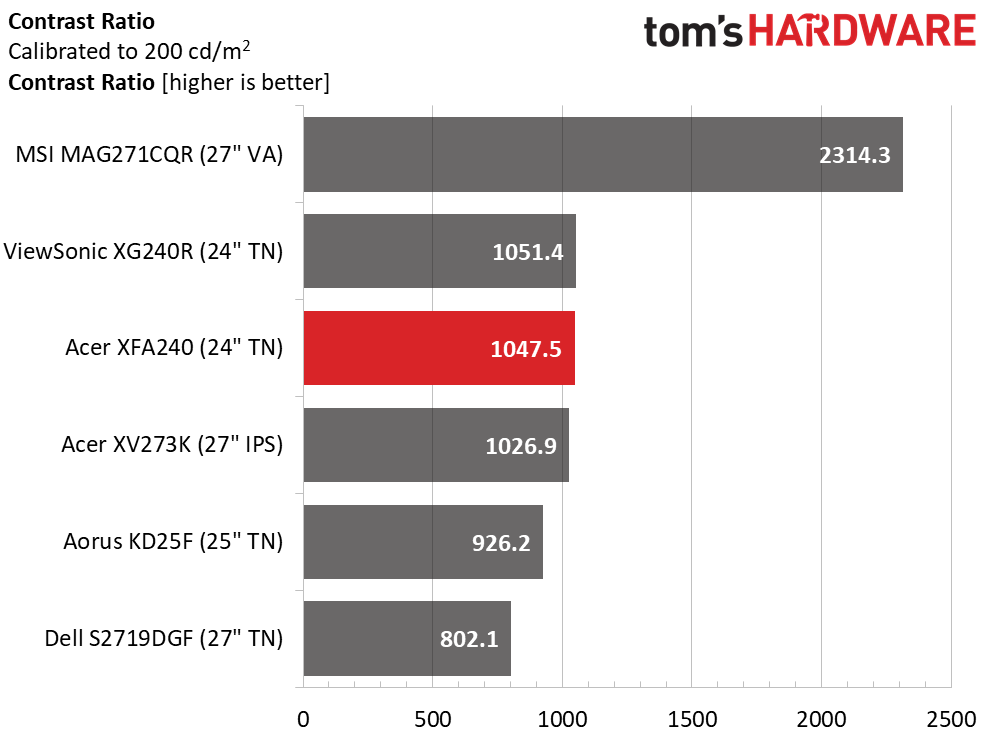
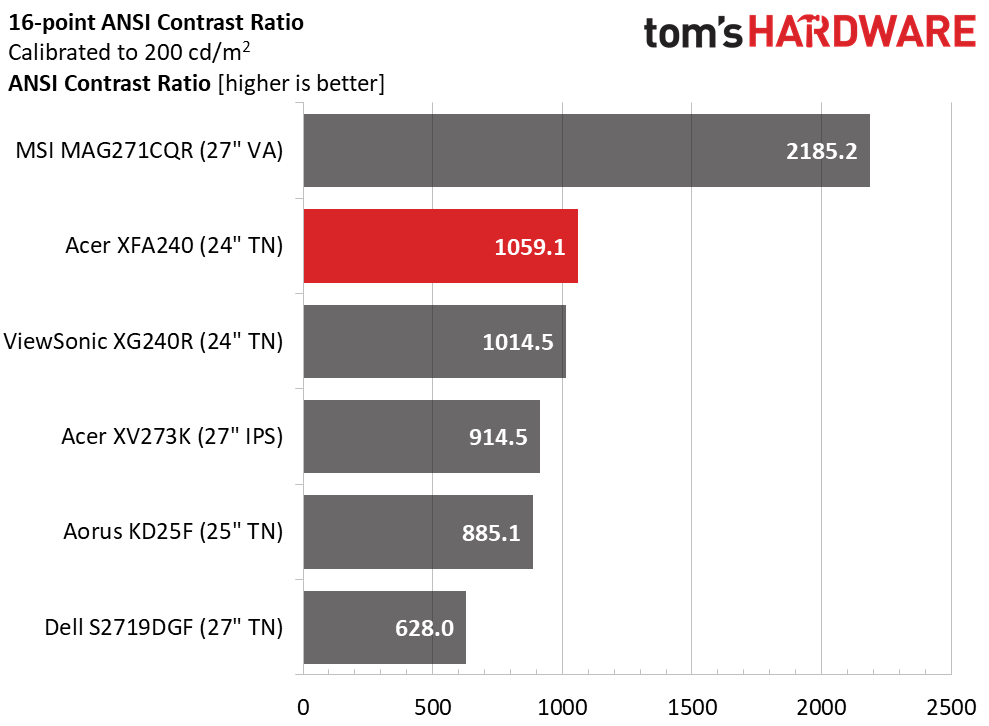
The XFA240’s black level fared better after calibration, thanks to our gamma tweak. It also helped that the RGB sliders start at center range, so a more balanced setup was possible. The controls are very precise with fine resolution that you’d expect from a professional screen. You won’t find calibration this good in most gaming monitors. Resulting contrast stayed solid at 1047.5:1. In the TN realm, this is excellent performance.
The XFA240 has impressive screen uniformity and intra-image contrast and bested all but the MSI in our ANSI benchmark. 1059.1:1 is higher than the vast majority of TN and IPS screens we’ve measured in this test. The price may be low, but Acer’s quality control is just as good as we’ve found in its more expensive displays.
MORE: Best Gaming Monitors
MORE: How We Test Monitors
Get Tom's Hardware's best news and in-depth reviews, straight to your inbox.
MORE: All Monitor Content
Current page: Brightness and Contrast
Prev Page Features and Specifications Next Page Grayscale, Gamma and Color
Christian Eberle is a Contributing Editor for Tom's Hardware US. He's a veteran reviewer of A/V equipment, specializing in monitors. Christian began his obsession with tech when he built his first PC in 1991, a 286 running DOS 3.0 at a blazing 12MHz. In 2006, he undertook training from the Imaging Science Foundation in video calibration and testing and thus started a passion for precise imaging that persists to this day. He is also a professional musician with a degree from the New England Conservatory as a classical bassoonist which he used to good effect as a performer with the West Point Army Band from 1987 to 2013. He enjoys watching movies and listening to high-end audio in his custom-built home theater and can be seen riding trails near his home on a race-ready ICE VTX recumbent trike. Christian enjoys the endless summer in Florida where he lives with his wife and Chihuahua and plays with orchestras around the state.
-
wirewick Why do you refer to the pixel density of this screen as if it's unique to Acer? The pixel density of this display is the same as an 1080p 24" monitor and therefor smaller pixels than any other 1080p eSports display >24".Reply
